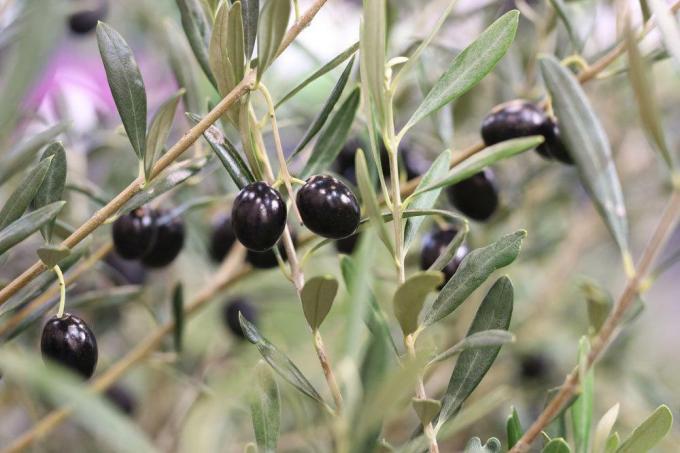
table of contents
- Winter-proof or hardy - the differences
- Winter hardy varieties
- acclimatization
- Protective measures for wintering
Of the Olive tree is becoming increasingly popular as a balcony and container plant. At the latest when the temperatures drop, the question arises whether the plant is also hardy or at least hardy. This is necessary in order to be able to take the appropriate protective measures and successfully bring olive trees through the cold season. We explain which varieties are suitable and which winter protection is still advisable.
Winter-proof or hardy - the differences
In order to find suitable varieties when choosing, the difference between the terms should first be clear.
Winter-resistant olive trees can be used in regions with mildWinters standing outdoors. However, they can only withstand frost to a limited extent. So it is important to protect them well. However, they should be kept indoors during colder or longer winters. Otherwise they could be damaged or even perish.
On the other hand, hardy olive trees hold up strongerfrost for a long time. Wintering outdoors is therefore possible without any problems. To prevent frostbite, some protective measures can still be useful. However, if an olive tree is hardy, the risk of damage is lower.
Winter hardy varieties
Some varieties of the olive tree are particularly hardy compared to other cultivars. These include:
- Forma Toscana
- Olea europea 'Lessini'
- Cornicabra
- Empeltre
- Hojiblanca
- Frantoio
- Picual
- Arbequina
- Manzanilla Cacerena
- Nevadillo de Jaen
Even with them, however, temperatures below -10 ° C can be problematic in the long term. Therefore, they can only be planted outdoors in regions with very mild winters. If the temperatures in winter regularly drop below -10 ° C, is a additional protection necessary. It can therefore make more sense to cultivate them in the tub. In the event of a strong onset of winter, you can bring your little tree into the house if necessary. In addition, insulating materials make it possible to protect them more comprehensively.

acclimatization
Although you cultivate the olive tree in the field or in the tub, in addition to the winter hardiness or winter resistance, acclimatization is also crucial for successful Wintering.
Because olive trees come from milder regions and therefore have a hard time adapting north of the Alps. It is therefore best to have olive trees already in the spring to plant or take outside. In this way they can acclimate and get used to the lower or sinking temperatures.
If the plant is only acquired in summer or autumn, at least the previous site conditions should be known in detail. In the first year it is still better to overwinter the plant indoors.
Protective measures for wintering
Whether the olive tree has been planted outdoors or is overwintered in a bucket, is hardy or hardy - additional protection doesn't do any harm. The following measures are suitable:
Isolation from below
Place the bucket on a pallet and a sheet of styrofoam. This prevents frost from penetrating the earth from below. That protects the roots.
Cover the tree slice
It is important to cover the tree slice both in the bucket and when planting outdoors. This is a protection against ground frost. Suitable materials are straw, brushwood and mulch.
Wrap the bucket
Jute and special plant fleece isolate the tub from the outside and thus reduce the risk of damage to the roots due to the penetrating frost.
Protect trunk and isolate crown
Again, you can use jute and vegetable fleece to wrap the trunk and crown. On the one hand, this offers a certain protection against frost. On the other hand, the weight load from snow is reduced. On frost-free days, the cover of the crown can be removed so that the sun can shine on the leaves.
Wintering in the house is much easier. The olive tree is placed in a frost-free, bright room. The substrate should not dry out completely, but neither should it be kept wet or very moist. The ideal temperature is between 5 ° C and 10 ° C.

